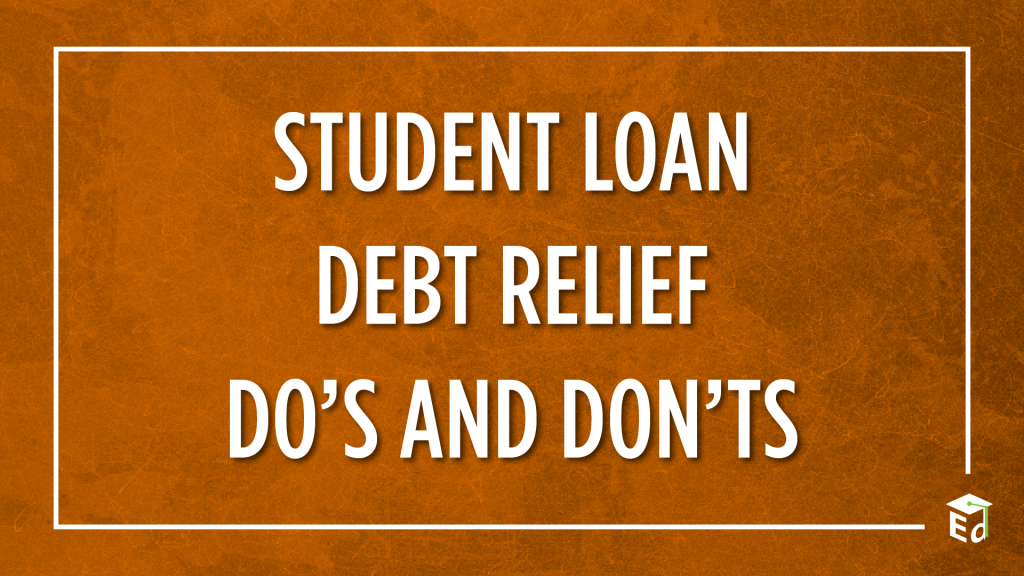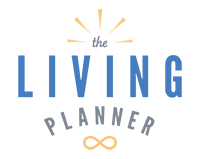Student Loan Forgiveness has been in the news of late. This student loan relief initiative will impact up to 40 Million Americans. As information about the program details continues to evolve, there may be some “tweaks” ahead.
The US Department of Education released an article of “do’s and don’ts” this week I wish to share now. The scammers are busy – it’s important you pay attention and exercise caution about sharing information.

PROTECT YOURSELF FROM SCAMS INVOLVING STUDENT LOAN DEBT RELIEF YOU ARE YOUR BEST PROTECTION AGAINST SCAMMERS
DON’T pay anyone who contacts you with promises of debt relief or loan forgiveness. YOU DO NOT NEED TO PAY ANYONE TO OBTAIN DEBT RELIEF. The application will be free and easy to use when it opens in October.
DON’T reveal your FSA ID or account information or password to anyone who contacts you. The Department of Education and your federal student loan servicer will never call or email you asking for this information.
DON’T ever give personal or financial information to an unfamiliar caller. When in doubt, hang up and call your student loan servicer directly. You can find your federal student loan servicer’s contact information at Studentaid.gov/manage-loans/repayment/servicers.
DON’T refinance your federal student loans unless you know the risks. If you refinance federal student loans that are eligible for debt relief into a private loan, you will lose out on important benefits like one-time debt relief and flexible repayment plans for federal loans.
DO sign up at www.ed.gov/subscriptions to be notified when the Student Loan Debt Relief application becomes available.
DO create an FSA ID at StudentAid.gov. You will not need it for the debt relief application but having an FSA ID can allow you to easily access accurate information on your loan and make sure FSA can contact you directly, helping you equip yourself against scammers trying to contact you. Log in to your current account on StudentAid.gov and keep your contact info up to date. If you need help logging in follow these tips on accessing your account.
DO make sure your loan servicer has your most current contact information. If you don’t know who your servicer is, you can log into StudentAid.gov and see your servicer(s) in your account.
DO report scammers to the Federal Trade Commission by visiting reportfraud.ftc.gov.

What is Student Loan Relief?
The Student Loan Relief plan offers targeted debt relief as part of a comprehensive effort to address the burden of growing college costs and make the student loan system more manageable for working families. The Department of Education will:
- Provide targeted debt relief to address the financial harms of the pandemic. The Department of Education will provide up to $20,000 in debt cancellation to Pell Grant recipients with loans held by the Department of Education, and up to $10,000 in debt cancellation to non-Pell Grant recipients. Borrowers are eligible for this relief if their individual income is less than $125,000 ($250,000 for married couples). No high-income individual or high-income household – in the top 5% of incomes – will benefit from this action. To ensure a smooth transition to repayment and prevent unnecessary defaults, the pause on federal student loan repayment will be extended one final time through December 31, 2022. Borrowers should expect to resume payment in January 2023.
- Make the student loan system more manageable for current and future borrowers by:
- Cutting monthly payments in half for undergraduate loans. The Department of Education is proposing a new income-driven repayment plan that protects more low-income borrowers from making any payments and caps monthly payments for undergraduate loans at 5% of a borrower’s discretionary income—half of the rate that borrowers must pay now under most existing plans. This means that the average annual student loan payment will be lowered by more than $1,000 for both current and future borrowers.
- Fixing the broken Public Service Loan Forgiveness (PSLF) program by proposing a rule that borrowers who have worked at a nonprofit, in the military, or in federal, state, tribal, or local government, receive appropriate credit toward loan forgiveness. These improvements will build on temporary changes the Department of Education has already made to PSLF, under which more than 175,000 public servants have already had more than $10 billion in loan forgiveness approved.
- Protect future students and taxpayers by reducing the cost of college and holding schools accountable when they hike up prices. The President championed the largest increase to Pell Grants in over a decade and one of the largest one-time influxes to colleges and universities. To further reduce the cost of college, the President will continue to fight to double the maximum Pell Grant and make community college free. Meanwhile, colleges have an obligation to keep prices reasonable and ensure borrowers get value for their investments, not debt they cannot afford. This Administration has already taken key steps to strengthen accountability, including in areas where the previous Administration weakened rules. The Department of Education is announcing new efforts to ensure student borrowers get value for their college costs.
StudentAid.Gov Information
Important Time-limited Opportunity for Public Servants
Until Oct. 31, 2022, borrowers may receive credit for payments that previously did not qualify for Public Service Loan Forgiveness (PSLF). Learn more about the time-limited changes to PSLF.
The StudentAid.Gov website provides important information to inform you of what’s needed. Go to: https://studentaid.gov/debt-relief-announcement/ for detailed information.
Another site to reference is: https://thecollegeinvestor.com/student-loan-forgiveness-programs-by-state/ This site provides information from forty-seven states and the District of Columbia that all have special student loan forgiveness programs for residents of their states that differ from the federal program.
If Your Income is Too High
A recent article in Forbes provides great tips if your income is too high to qualify for the federal relief program. Robert Farrington’s article can be read here: https://www-forbes-com.cdn.ampproject.org/c/s/www.forbes.com/sites/robertfarrington/2022/09/13/your-income-is-too-high-for-student-loan-forgiveness-now-what/amp/
Autumn is Upon Us!
This is my favorite time of year! The changes in the air, the trees and us. It’s a great time to look back to see how far we’ve come and look forward to the completion of the year.
This is a great time to think about conversations you’d like to have at home and work about the “what if’s”. If you’d like to schedule a discovery call about your specific situation, send me a note: Lynn@thelivingplanner.com. For overall information my website is: https://thelivingplanner.com and my online courses/resources will give you an idea of what I offer to assist people, pets and businesses on this website: https://courses.thelivingplanner.com
This quote about autumn from – Dodinsky speaks to me “I hope I can be the autumn leaf, who looked at the sky and lived. And when it was time to leave, gracefully it knew life was a gift” To autumn 🍁🍂 — Lynn
#LifeHacks #CareForPeopleCareForBusiness
